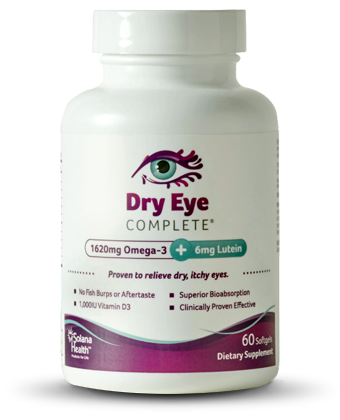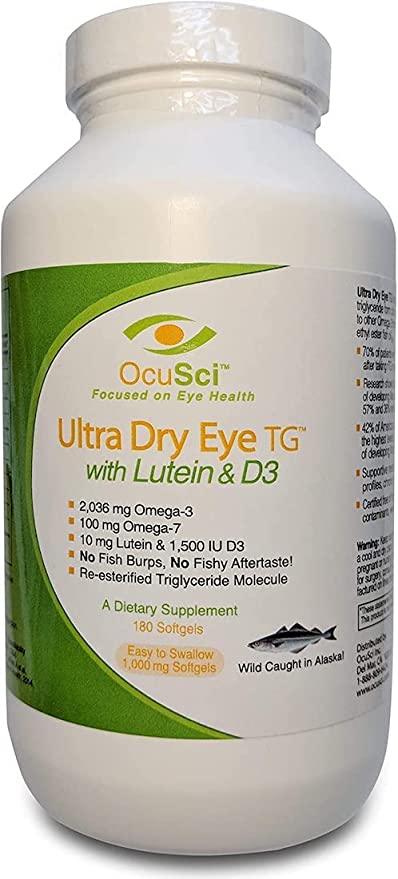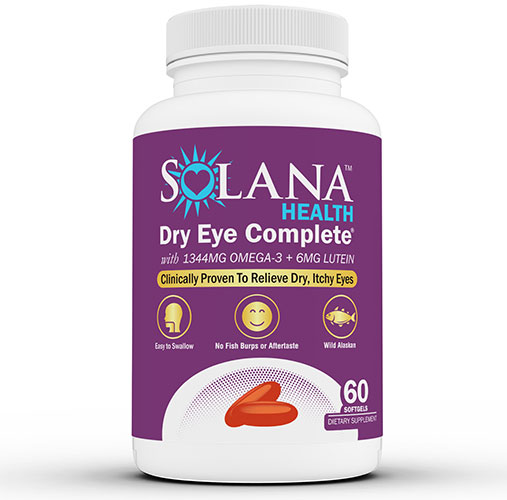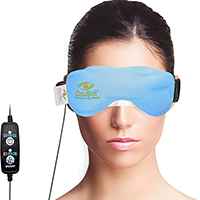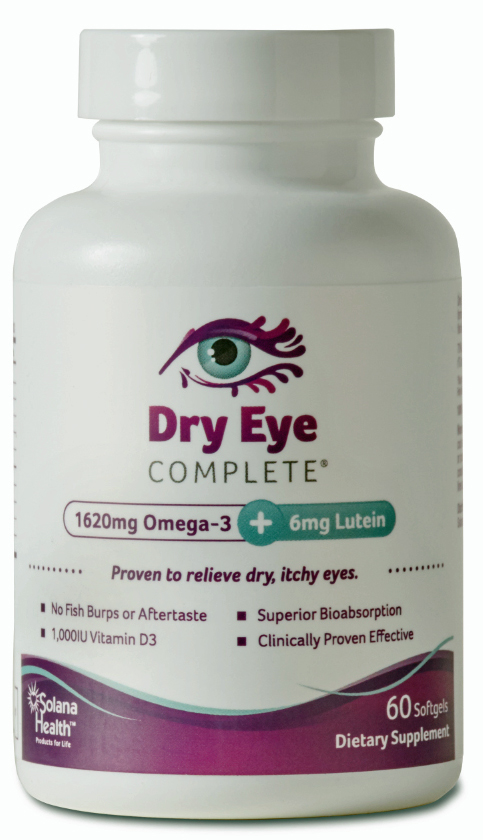Omega 3’s are fatty acids that have a lot of benefits for your health. The benefits range from helping your body to even helping your brain. To get these benefits, it is recommended that you consume at least 250 to 500 mg per day for an adult. They are also important for children to consume for help with brain development and function. Omega 3 fatty acids are essential for the body and you need to ensure that your body continues to operate at the optimum level.
Some of the functions of omega 3 fatty acids in the body include:
- Reducing unhealthy inflammation
- Lowering unhealthy cholesterol and triglycerides in the blood
- Preventing blood clots
- Lowering blood pressure
- Keeping artery walls healthy
- Assisting with healthy brain development
- Treating mental health conditions
Symptoms of an Omega 3 Fatty Acid Deficiency
Your body will definitely suffer the consequences if you do not get the right amount of omega 3 fatty acids in your diet. Since omega 3 fatty acids are important for the proper function of many organs in the body, it is important to know and watch for the signs of a deficiency. Some of the signs that you will see on your body include:
- Dry, rough, or even bumpy skin
- Lifeless hair
- Dandruff
- Brittle hair
- Brittle, peeling, or soft nails
- Frequent urination or excessive thirst
- Trouble falling asleep or waking up in the morning
- Trouble concentrating
- Being easily distracted
- Difficulty with your memory
- Depression
- Excessive mood swings
- Anxiety
- Emotional sensitivity
If you experience 2 or more of these symptoms, you may be suffering from an omega 3 fatty acid deficiency. As you can see, the symptoms are not just things that you can notice on your body but also those with your behavior and emotions. It is important to take notice of these so you can take the proper steps to increase your intake of omega 3 fatty acids. If you do think you have a deficiency, you can also have a test done with your doctor to determine if you do or not. Additionally, you can take the Opti-O-3 blood test at home with just a finger prick and you can verify that in just a few minutes.
How to Increase Your Omega 3 Fatty Acid Intake
If you are concerned about your level of omega 3 fatty acid intake, then the best way to increase your intake is by eating foods that are rich in omega 3 fatty acids. The easiest way to consumer more omega 3 fatty acids is by eating fatty fish but this is not the only place you can find the supplement. Fish are not the first choice for some people and if you are one of those people, you will want to consider some other options to ensure you are getting the right amount on a daily basis. Beyond eating foods that are right in omega 3 fatty acids, you can also take Omega 3 fatty acid supplements. Supplements should not be your first option because they can be diluted. If possible, you want to eat the foods that have the fatty acids in them naturally.
Foods High in Omega 3 Fatty Acids
There are many different foods that are high in omega 3 fatty acids. There are a variety of foods that you can eat for a large source of omega 3 fatty acids including fatty fish, high-fat plant foods, and even algae. If you do wish to increase your intake, then you will want to make sure that your diet includes some of these foods.
- Mackerel – Mackerel have approximately 5134 mg of omega 3 fatty acids per serving, which is about 3.5 ounces or 100 grams in size. Mackerel are small, fatty fish that can be smoked. Not only do they have a good serving of omega 3 fatty acids, but they also have other nutrients that your body can use. These include the recommended daily value of selenium and two times the recommended daily value of vitamin B12. To make it even better, they are easy to eat because they do not need a lot of preparation. You can smoke them, as previously mentioned, and you can cook them by baking them. It is very easy and you end up with quite a tasty meal.
- Salmon – Salmon is known for being one of the most nutrient dense foods in the world. You can find 4023 mg of omega 3 fatty acids in half a filet of salmon and 2260 mg of omega 3 fatty acids in 100 grams or 3.5 ounces. Beyond that, the fish also provides high-quality protein and high volumes of potassium, magnesium, B-vitamins, and selenium. There have been many studies that have shown that people who eat fatty fish such as salmon can lower their risk of depression, dementia, and heart disease. This makes salmon a no-brainer for adding to your list of regular foods to consume.
- Cod Liver Oil – While this is not exactly a food, it is a supplement that is extracted from the livers of cod fish. It is an oil that has 2664 mg of omega 3 fatty acids in a single tablespoon making it a great option even if you do not like to eat fish. Beyond being high in omega 3 fatty acids, it also has 338 percent of the recommended daily value of vitamin D and 270 percent of the recommended daily value of vitamin A. Taking this supplement will allow you to get plenty of these essential nutrients for your body in just one serving. One serving is all you need though because too much vitamin A can be harmful to your body.
- Herring – Herring is another type of fish that is high in omega 3 fatty acids. Herring is a medium sized oily fish that has 3181 mg of omega 3 fatty acids in a filet and 1729 mg in 100 grams or 3.5 ounces. You can find Herring that is precooked for you, cold smoked, or even as a canned snack. In some countries, it is even served for breakfast with eggs. Beyond the high amount of omega 3 fatty acids, you will also find the full recommended daily value of both vitamin D and selenium. You will also get half of the recommended daily value of vitamin B12.
- Oysters – Oysters are part of the shellfish family and shellfish are some of the most nutritious foods that we can consume. In only 6 oysters, you will find 565 mg of omega 3 fatty acids. In 3.5 ounces or 100 grams, you will find 672 mg of omega 3 fatty acids. In addition to the omega 3 fatty acids, you will also find more zinc than any other food with 600 percent of the recommended daily value. You will also find 200 percent of the recommended daily value of copper and 300 percent of the recommended daily value of vitamin B12. You can eat oysters as a meal, a snack, and even as a appetizer. Typically, they are cooked but in some countries, raw oysters are considered to be a delicacy.
- Sardines – Sardines are a small and oily fish. They are very nutritious and even more so when they are eaten whole. Beyond that, they have almost every nutrient that the body needs. They contain 2205 mg of omega 3 fatty acids per cup and 1408 mg of omega 3 fatty acids per 100 grams or 3.5 ounces. Additionally, one cup contains more than 200 percent of the recommended daily value of vitamin B12 and more than the recommended daily value of vitamin D and selenium. You can typically find sardines available in a tin or jar and can eat them as a snack, a delicacy, or even as an appetizer.
- Anchovies – Anchovies are another small and oily type of fish that have a lot of omega 3 fatty acids. They contain 951 mg of omega 3 fatty acids in a 2 ounce can or 2113 mg of omega 3 fatty acids per 100 grams or 3.5 ounces. They are also a good source of calcium, selenium, and niacin. They are typically found in a jar with oil or dried. They tend to be eaten in small portions because of their strong flavor. You may find them rolled around capers, on pizza, stuffed in olives, or even as a salad topping. They are also included in sauces and dishes to add flavor such as Caesar dressing, remoulade, and Worcestershire sauce. You may already be eating anchovies and not even realize it.
- Caviar – Caviar is a food that is made up of fish eggs. In many societies, it is seen as a luxury food item. Because of this, it is usually seen served in small portions such as a garnish, a taster, or even as an appetizer for a mean. They have 1086 mg of omega 3 fatty acids per tablespoon and 6789 mg of omega 3 fatty acids per 100 grams or 3.5 ounces. Caviar also has a high level of choline and low levels of omega 6 fatty acids.
- Flaxseeds – Flaxseeds are another great option if you do not like to eat fish. They are small brown or yellow seeds that can be found in oil form, as seeds, or even ground or milled. You will find 2338 mg of omega 3 fatty acids in just one tablespoon of seeds and 7196 mg of omega 3 fatty acids in just one tablespoon of flaxseed oil. Flaxseeds are the richest whole food source of an omega 3 fat named alpha-linolenic acid, or ALA. It is also the oil that is used most often as an omega 3 fatty acid supplement. Additionally, they are high in fiber, magnesium, vitamin E, and other nutrients. When compared to other oily plant seeds, they have an excellent ratio of omega 6 and omega 3 fatty acids. You can add flaxseeds to foods that you are already eating such as in your yogurt, on your salad, or even in a smoothie.
- Chia Seeds – Chia seeds are another plant seed that are very nutritious when it comes to omega 3 fatty acids and other nutrients. They have 4915 mg of omega 3 fatty acids per ounce. They also have a large amount of calcium, phosphorus, manganese, and some other important nutrients. The standard serving of chia seeds is a 1 ounce 2 tablespoon serving. This service has 4 grams of protein and all eight of the essential amino acids. Like flaxseeds, you can also add chia seeds to many of the foods that you already consume. Common foods to add them to include salads and various types of yogurts or smoothies both in stores or at home.
- Walnuts – Walnuts are a type of nut that have 2542 mg of omega 3 fatty acids per ounce. An ounce serving is about 7 walnuts. Walnuts also have a lot of other nutrients including a lot of fiber, vitamin E, manganese, copper, and other plant compounds that are important for the body. When eating the walnuts, you will want to make sure you do not remove the skin before consumption. This is because the skin has the majority of the phenol antioxidants that are found in the food. Walnuts are a versatile food that you can include on a salad, put in some brownies or other type of dessert, or even eat as a snack on their own.
- Soybeans – Soybeans are a vegetable protein and a great source of fiber. They contain 1241 mg of omega 3 fatty acids in a half a cup serving of omega 3 fatty acids and 1443 mg of per 100 grams or 3.5 ounces. They also contain nutrients such as vitamin K, folate, magnesium, riboflavin, and potassium. Soybeans are a high source of omega 6 fatty acids which makes the food a bit less reliable for your omega 3 fatty acid source. It is important to ensure there is a balance between the two. Soybeans can be found in a variety of foods and recipes. You can add them to many recipes such as chili or even add them to a salad.
There are many different food sources where you can find a good amount of omega 3 fatty acids. Even if you are not fond of eating fish, there are many ways you can increase your intake of the nutrients so you can ensure that your body continues to function optimally. These are just a few of the foods where you can find omega 3 fatty acids but there are many more available for consumption.
References

